Welcome to our article about green roofs and living walls, two exciting and innovative solutions to transform urban spaces sustainably. As cities continue to expand, the importance of sustainable practices becomes increasingly critical. Green roofs and living walls offer a practical and eco-friendly approach to urban landscaping that not only enhances the beauty of our cities but also provides a range of environmental benefits.
Green roofs are eco-friendly roofs that can support rooftop gardens and vegetation. They offer a range of benefits, including improved air quality, energy efficiency, stormwater management, and biodiversity promotion. Living walls, on the other hand, are vertical greenery solutions that can bring nature into urban spaces. They can be used for both interior and exterior designs and provide aesthetic and environmental benefits.
Key Takeaways:
- Green roofs and living walls are innovative solutions to transform urban spaces sustainably.
- Green roofs offer improved air quality, energy efficiency, stormwater management, and biodiversity promotion.
- Living walls provide aesthetic and environmental benefits and can be used for both interior and exterior designs.
The Benefits of Green Roofs
Green roofs, also known as eco-friendly roofs or rooftop gardens, have numerous benefits that contribute to a healthier and more sustainable environment.
Improved air quality: Green roofs help filter pollutants and particulate matter from the air, contributing to improved air quality in urban areas. The plants on green roofs absorb carbon dioxide and release oxygen through photosynthesis, helping to reduce the urban heat island effect.
Energy efficiency: Green roofs provide insulation and can reduce the need for air conditioning during the summer months. They can also prevent heat loss during the winter, reducing heating costs.
Stormwater management: Green roofs help to capture and retain rainwater, reducing the burden on urban drainage systems and preventing flooding. The plants and soil on green roofs absorb and filter rainwater, reducing the amount of runoff and pollutants that enter waterways.
Biodiversity promotion: Green roofs provide habitats for birds and insects, contributing to urban biodiversity and promoting a healthier ecosystem. They also help to mitigate the loss of natural habitats due to urbanization.
Overall, green roofs are an effective way to promote sustainability in urban environments, and their benefits make them an increasingly popular choice for building owners and developers.

Green Roof Design and Installation
Designing and installing green roofs is a complex process that requires careful planning and professional expertise. Proper planning and structural considerations are crucial for the successful implementation of a green roof. The plant selection is also of the utmost importance, as the chosen plants must be able to withstand the harsh environmental conditions of a rooftop.
Professional green roof designers and installers can help with every step of the process, from initial planning to the final installation. They can assess the roof’s structural capacity and make recommendations for necessary modifications, such as additional support or waterproofing.
| Green Roof Design and Installation Tips: |
| Choose plants that are well-suited for the local climate and able to tolerate extended periods of drought. |
| Ensure adequate drainage and irrigation systems are in place. |
| Consider the weight of the green roof and make any necessary structural modifications. |
| Use a high-quality growing medium to promote healthy plant growth. |
| Regularly inspect and maintain the green roof to ensure its longevity and effectiveness. |
With proper design and installation, a green roof can provide numerous benefits, including improved air quality, energy efficiency, stormwater management, and biodiversity promotion. A well-designed green roof can also increase a building’s value and appeal while contributing to a healthier and more sustainable environment.
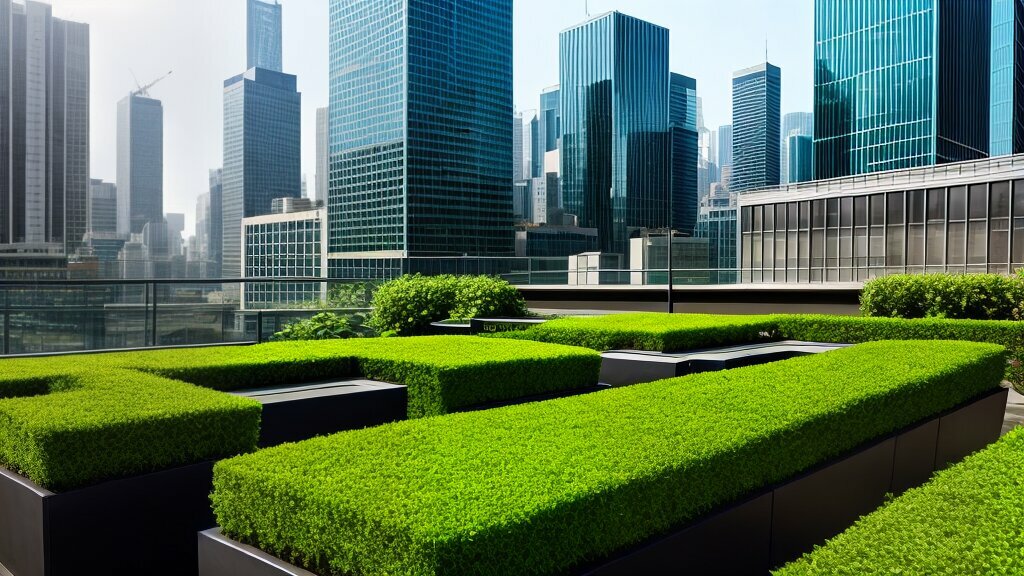
Image source: Pinterest
Maintaining Green Roofs for Longevity
Green roofs are not only eco-friendly, but they can also be durable and long-lasting with proper maintenance. Regular maintenance can ensure that your green roof stays healthy and effective in providing environmental benefits for your urban space.
Watering: Regular watering is essential for green roofs, especially during hot and dry weather. In the first year after installation, your green roof will need more frequent watering, at least once a week. After the first year, watering can be reduced to once or twice a month, depending on the weather.
Fertilizing: Fertilizing your green roof can help promote healthy growth and ensure plant health. Organic fertilizers are recommended, such as compost tea or slow-release pellets. Avoid chemical fertilizers that can harm the environment and the plants.
Removing debris: Regularly remove debris from your green roof, including fallen leaves, sticks, and other debris. This will prevent clogging of drainage systems and ensure good air circulation.
Annual inspection: It is recommended to have a professional inspection at least once a year to ensure that your green roof is performing well and identify any potential issues.
Professional maintenance: Professional maintenance services are also available and can help extend the lifespan of your green roof. These services may include weeding, fertilizing, pruning, and pest control.
With proper maintenance, your green roof can last for many years and continue to provide environmental benefits for your urban space.

Living Walls: Vertical Greenery Solutions
As urban areas continue to expand and green space becomes increasingly scarce, living walls are quickly gaining popularity as a solution to bring nature back into our cities. Also known as green walls, living walls are a type of vertical garden that can be installed both indoors and outdoors.
Living walls come in many different shapes and sizes and can be designed to incorporate a wide variety of plants, from ferns and mosses to flowering plants and even small trees. They not only provide aesthetic value by adding a touch of greenery to otherwise dull walls, but they also offer numerous environmental benefits.
Studies have shown that living walls can help to reduce air pollution, decrease the urban heat island effect, and even reduce noise levels. They can also help to regulate indoor air quality by purifying the air through a process known as phytoremediation.
One unique benefit of living walls is their ability to provide insulation, helping to regulate temperature and reduce energy consumption in buildings. Additionally, living walls can promote biodiversity in urban areas by providing habitats for beneficial insects and birds.
Types of Living Walls
There are two main types of living walls: panel-based systems and modular systems.
| Panel-Based Systems |
Modular Systems |
| Panel-based systems are pre-vegetated panels that are installed onto a wall or framework. They are typically created off-site and then transported to their final location for installation. Panel-based systems are more suitable for indoor installations or in areas where the wall design is predetermined and cannot be altered. |
Modular systems consist of individual pots or containers that are installed onto a framework. These systems are more flexible and can be easily installed and rearranged. Modular systems are great for outdoor installations and for creating custom designs. |
Both panel-based and modular systems require proper irrigation and drainage systems to ensure the health and longevity of the plants. The right system for a specific installation depends on various factors such as the location, amount of sunlight, and wall structure.
Overall, living walls are an innovative solution to improving urban areas by adding greenery, reducing pollution, and promoting biodiversity. They have become increasingly popular in recent years and can be found in a range of settings, from office buildings to public spaces.

Creating and Installing Living Walls
Creating and installing a living wall is a complex process that requires careful planning and attention to detail. The first step is to determine the type of living wall that best suits your space and preferences. There are several types of living walls, including soil-based, hydroponic, and modular systems.
Soil-based living walls are the most common type and use a growing medium of soil and other organic materials to support plant growth. Hydroponic systems, on the other hand, use a nutrient-rich water solution to nourish plants, while modular systems consist of pre-grown plants that are arranged in a modular panel.
Once you have chosen the type of living wall, you need to consider the design and installation process. The design should take into account the placement of the wall, the amount of sunlight it will receive, and the type of plants that will be used.
It is also important to consider the structural support required to hold the living wall in place. Living walls can be heavy, and the wall may need to be reinforced or engineered to withstand the weight of the plants and growing medium.
Proper irrigation and drainage systems are also crucial for the health and longevity of living walls. An automated drip irrigation system is usually recommended, as it ensures that the plants receive a consistent water supply without overwatering. Proper drainage is also important to prevent water damage and ensure structural stability.
Regular maintenance is necessary to ensure the health and longevity of your living wall. This includes regular watering and fertilization, pruning, and monitoring for pest infestations. It is also important to regularly inspect the wall for damage and make any necessary repairs.
A well-designed and maintained living wall can bring a range of benefits to your space, including improved air quality, aesthetic appeal, and increased biodiversity. It can also contribute to a more sustainable and eco-friendly urban environment.

The Environmental Impact of Green Roofs and Living Walls
Green roofs and living walls have a remarkable impact on the environment. By implementing sustainable roofing practices, we can significantly reduce our carbon footprint and strengthen our cities’ resilience to climate change.
One of the most significant benefits of green roofs is their ability to reduce the urban heat island effect. Traditional roofs absorb and retain heat, causing cities to be warmer than surrounding areas. Green roofs, on the other hand, absorb less heat and release it more slowly, helping to mitigate this effect.
| Benefit |
Description |
| Improved Air Quality |
Green roofs filter pollutants and trap dust, improving the overall air quality of urban areas. |
| Energy Efficiency |
Green roofs provide additional insulation, reducing the need for artificial heating and cooling and lowering energy consumption. |
| Stormwater Management |
Green roofs absorb rainfall, reducing runoff and the risk of flooding in urban areas. |
| Biodiversity Promotion |
Green roofs create new habitats for plants and animals, promoting biodiversity in otherwise barren urban environments. |

Living walls also have numerous benefits, both aesthetic and environmental. They add natural beauty to buildings and create a peaceful atmosphere in urban environments. In terms of the environment, living walls improve air quality by filtering pollutants, reduce energy consumption by providing additional insulation, and absorb rainwater to reduce runoff.
“Green roofs and living walls are an essential part of urban design that promote a healthier and more sustainable future.”
By incorporating green roofs and living walls into our cities, we can create greener, more sustainable spaces that benefit both people and the planet.
Case Studies: Successful Green Roof and Living Wall Projects
Real-life examples of successful green roof and living wall projects demonstrate the transformative potential of sustainable urban design. These projects range from public spaces to commercial and residential buildings, highlighting the versatility of green roofs and living walls.
Green Roof Project: Chicago City Hall
The Chicago City Hall showcases the benefits of green roofs through its 20,000 square feet eco-friendly rooftop garden. The rooftop garden features a variety of plants and native grasses, which improve air quality and reduce stormwater runoff. The garden also helps insulate the building, reducing energy costs.
The design and installation of the rooftop garden required careful planning and consideration of structural integrity. The use of lightweight soil and a drip irrigation system ensured that the roof would support the garden’s weight while also conserving water.
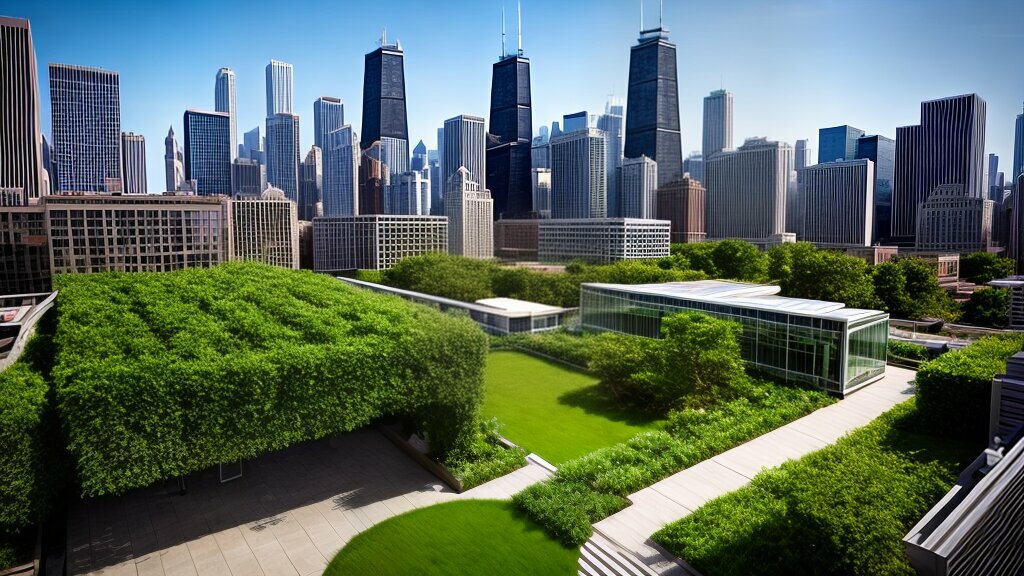
Living Wall Project: One Central Park, Sydney
One Central Park in Sydney features a spectacular 1,200 square meter vertical garden, making it one of the most prominent living walls in the world. The living wall boasts over 35,000 plants, creating a natural habitat for wildlife while also enhancing the building’s aesthetic appeal.
The design of the living wall required consideration of plant selection and irrigation systems. The living wall uses a state-of-the-art hydroponic system that recirculates nutrient-rich water, reducing water consumption and providing optimal conditions for plant growth.

Green Roof and Living Wall Project: The Bosco Verticale, Milan
The Bosco Verticale in Milan is an iconic example of the integration of green roofs and living walls in urban design. The building features over 900 trees and thousands of plants, providing a natural space for residents and promoting biodiversity.
The installation and maintenance of the green roofs and living walls required careful planning and innovation. The use of an automated irrigation system and specialized maintenance services ensured the health and longevity of the greenery.

These case studies showcase the potential of green roofs and living walls to transform urban spaces sustainably. As cities continue to grow, the implementation of sustainable urban design practices becomes increasingly vital. Green roofs and living walls offer a practical and effective solution to improve environmental and social outcomes while creating vibrant and healthy urban spaces.
The Future of Urban Landscaping: Green Roofs and Living Walls
Green roofs and living walls have the potential to revolutionize the way we think about urban landscapes. As cities continue to expand and the effects of climate change become more pressing, sustainable design practices are more necessary than ever before. Green roofs and living walls offer a practical solution to many of the environmental challenges facing urban areas.
As the benefits of green roofs and living walls become more widely recognized, we can expect to see greater adoption of these practices in future urban landscapes. Governments and policymakers can play a key role in advancing sustainable design through incentives and regulations that encourage the implementation of green roofs and living walls.
Additionally, public awareness and engagement can help to drive the demand for sustainable urban design. As more people become informed about the benefits of green roofs and living walls, they can make informed decisions to support these practices in their own communities.
One exciting area of development is the integration of technology into green roofs and living walls. Advances in sensors and monitoring systems can help to optimize the performance of these structures and ensure their effectiveness over time.
Finally, continued research and innovation will be critical in advancing the field of sustainable urban design. Through experimentation and collaboration, we can discover new and more effective ways to integrate green roofs and living walls into our cities, creating healthier and more sustainable environments for all.
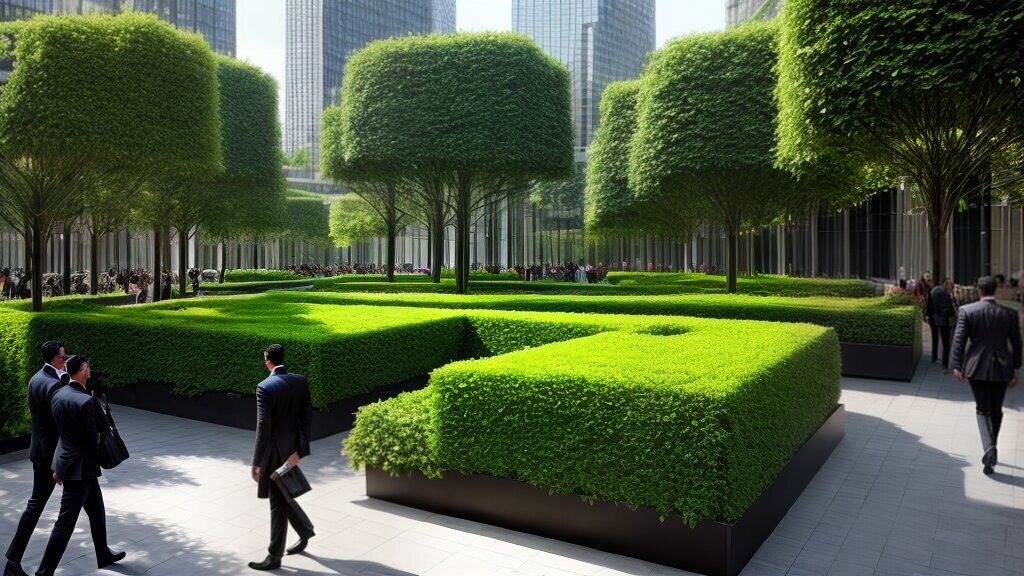
Conclusion
Green roofs and living walls have the power to transform our urban spaces into greener, healthier, and more sustainable environments. By promoting biodiversity, reducing the urban heat island effect, improving air quality, and conserving energy, these eco-friendly alternatives are becoming increasingly popular in cities around the world.
As we face the challenges of climate change and urbanization, it’s more important than ever to support sustainable practices. Green roofs and living walls are just two of the many innovative solutions available to us.
We encourage readers to explore the potential of green roofs and living walls and to advocate for their implementation in their own communities. With continued research, innovation, and public awareness, we can create a future where sustainable urban design is the norm.
FAQ
Q: What are the benefits of green roofs?
A: Green roofs provide various benefits, including improved air quality, energy efficiency, stormwater management, and biodiversity promotion. They contribute to creating a healthier and more sustainable environment.
Q: How are green roofs designed and installed?
A: Green roofs require proper planning, consideration of structural aspects, and careful plant selection. Professional expertise is essential for successful green roof design and installation.
Q: How should green roofs be maintained?
A: Regular maintenance tasks for green roofs include watering, fertilizing, and removing debris. It is important to conduct regular inspections and seek professional maintenance services to ensure the longevity and effectiveness of green roofs.
Q: What are living walls and their applications?
A: Living walls are vertical greenery solutions that bring nature into urban environments. They can be used for both interior and exterior designs and provide aesthetic and environmental benefits.
Q: How are living walls created and installed?
A: Creating and installing living walls involves considerations for plant selection, irrigation systems, and structural support. Proper maintenance and monitoring are crucial for the health and longevity of living walls.
Q: What is the environmental impact of green roofs and living walls?
A: Green roofs and living walls contribute to reducing the urban heat island effect, improving air quality, conserving energy, and promoting biodiversity. They create habitats for wildlife and have a positive environmental impact.
Q: Can you provide examples of successful green roof and living wall projects?
A: Yes, there are various successful case studies of green roof and living wall projects, including commercial buildings, residential properties, and public spaces. These projects have overcome challenges and achieved positive outcomes.
Q: What is the future potential of green roofs and living walls in urban landscaping?
A: Green roofs and living walls have the potential for widespread adoption in future urban landscapes. Government policies, incentives, and public awareness play a significant role in driving their implementation. Continued research and innovation are essential for advancing sustainable urban design.






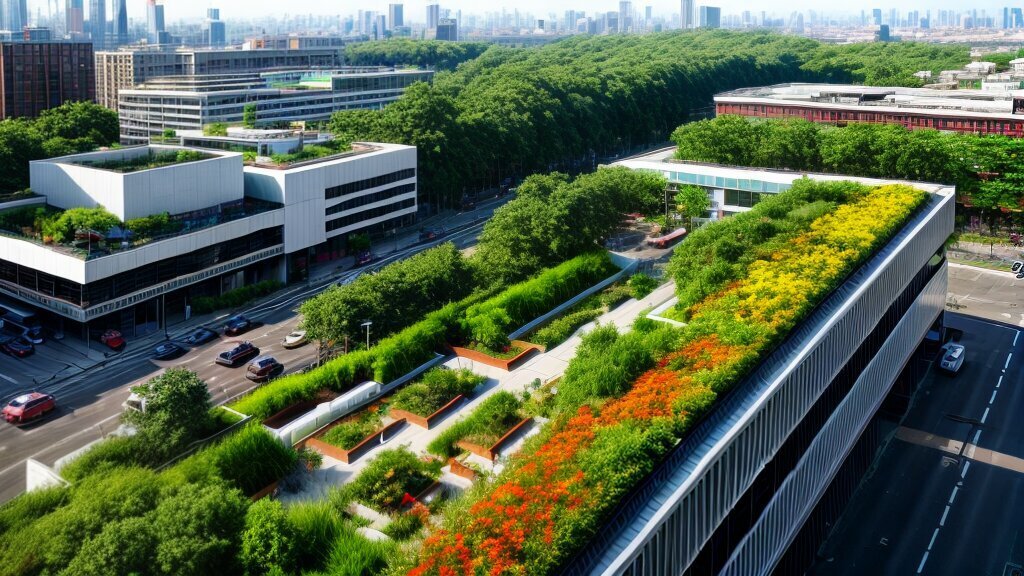











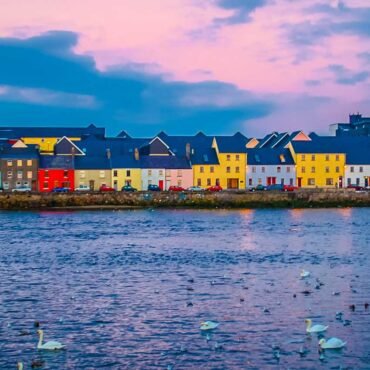









Post comments (0)